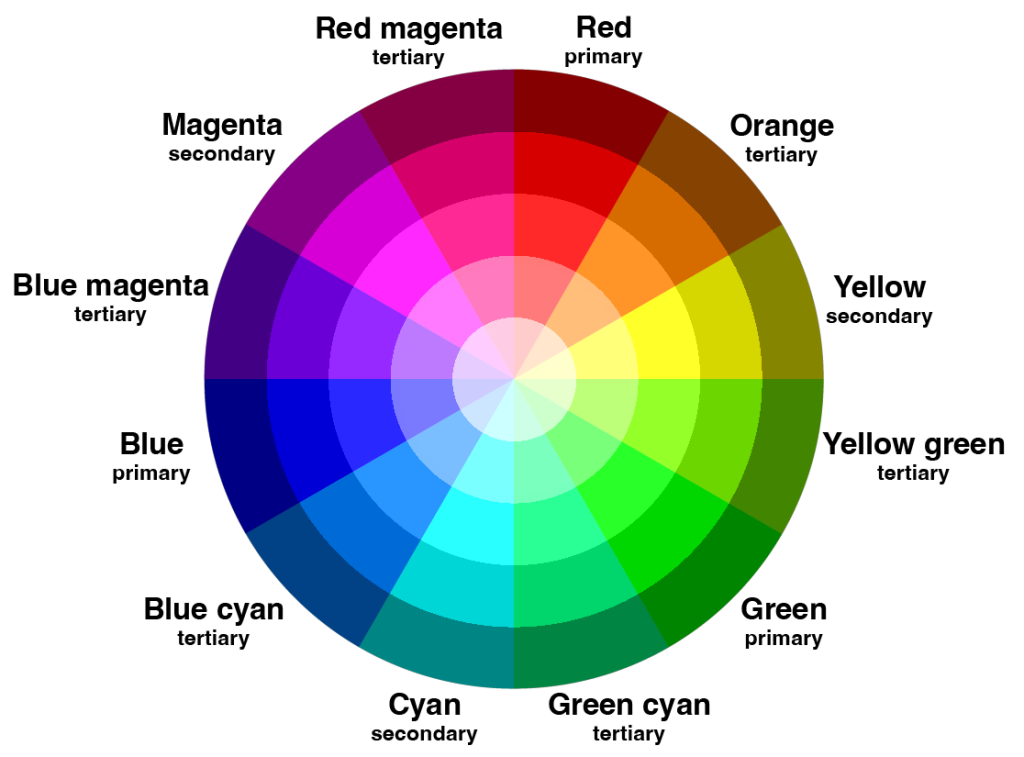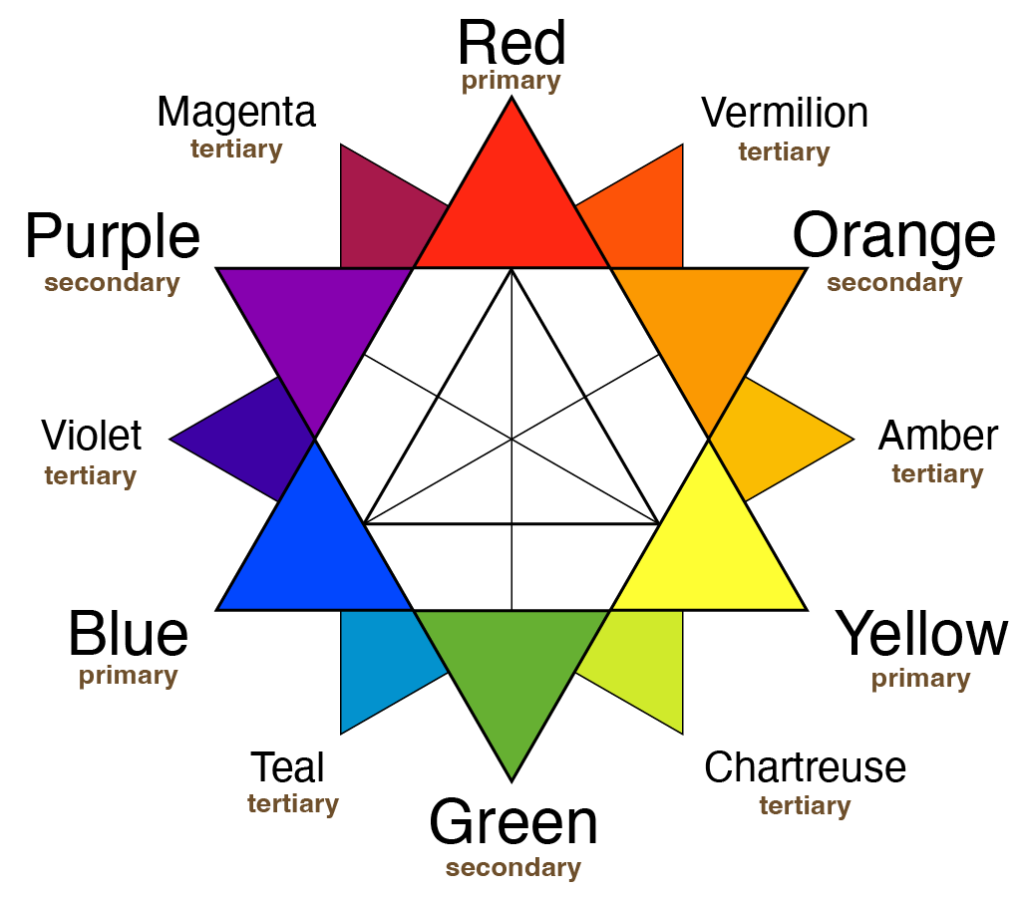Additive and subtractive colours on the colour wheel
You might observe from the diagram on the previous page that mixing two additive primary colours gives you a subtractive primary colour. You might also observe that mixing two subtractive primary colours gives you an additive primary colour. This can be confusing until you understand how additive and subtractive colour works.
The confusion is at once resolved when it is realized that red, green, and blue are selected as additive primaries because they provide the greatest colour gamut in mixtures. For the same reason, the subtractive primaries are, respectively, red-absorbing (cyan), green-absorbing (magenta), and blue-absorbing (yellow).[1]
Our current scientific knowledge and practical understanding of additive and subtractive colours have led to a more accurate colour wheel that displays both additive and subtractive colours, as shown in Figure 3.6.
Chapter 1. Colour theory: history and culture describes varied theories of primary, secondary and tertiary colours throughout history. This includes some very different examples of colour wheels, including the RYB (Red, Yellow, Blue) colour wheel (Figure 3.7), which is still used in some contexts to teach colour mixing in visual arts.
Here is an image example of a contemporary colour wheel that shows additive primary, secondary and tertiary colours:

And here’s an image of a traditional RYB colour wheel

To see an interactive colour wheel with colour relationship options, visit 3.5 Interactive colour wheels and relationships in this resource.
- Encyclopedia Britannica online (Britannica.com), 'The Visible Spectrum' https://www.britannica.com/science/color/The-visible-spectrum ↵

